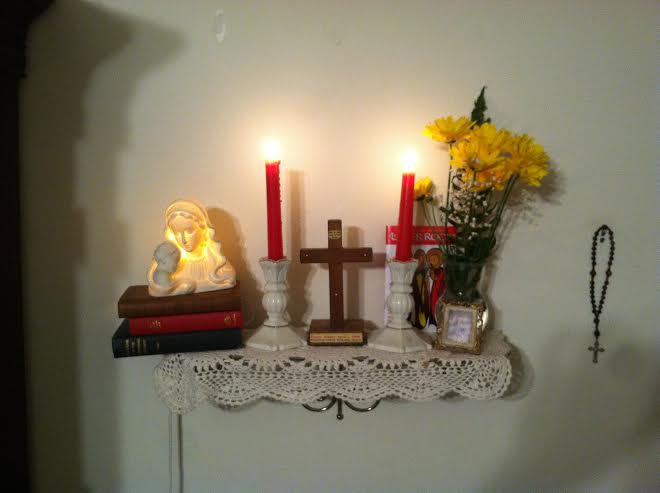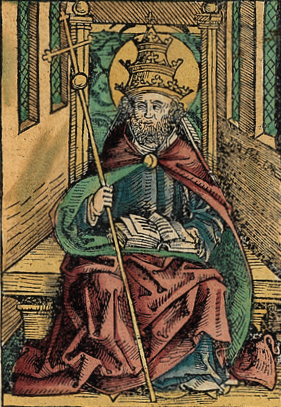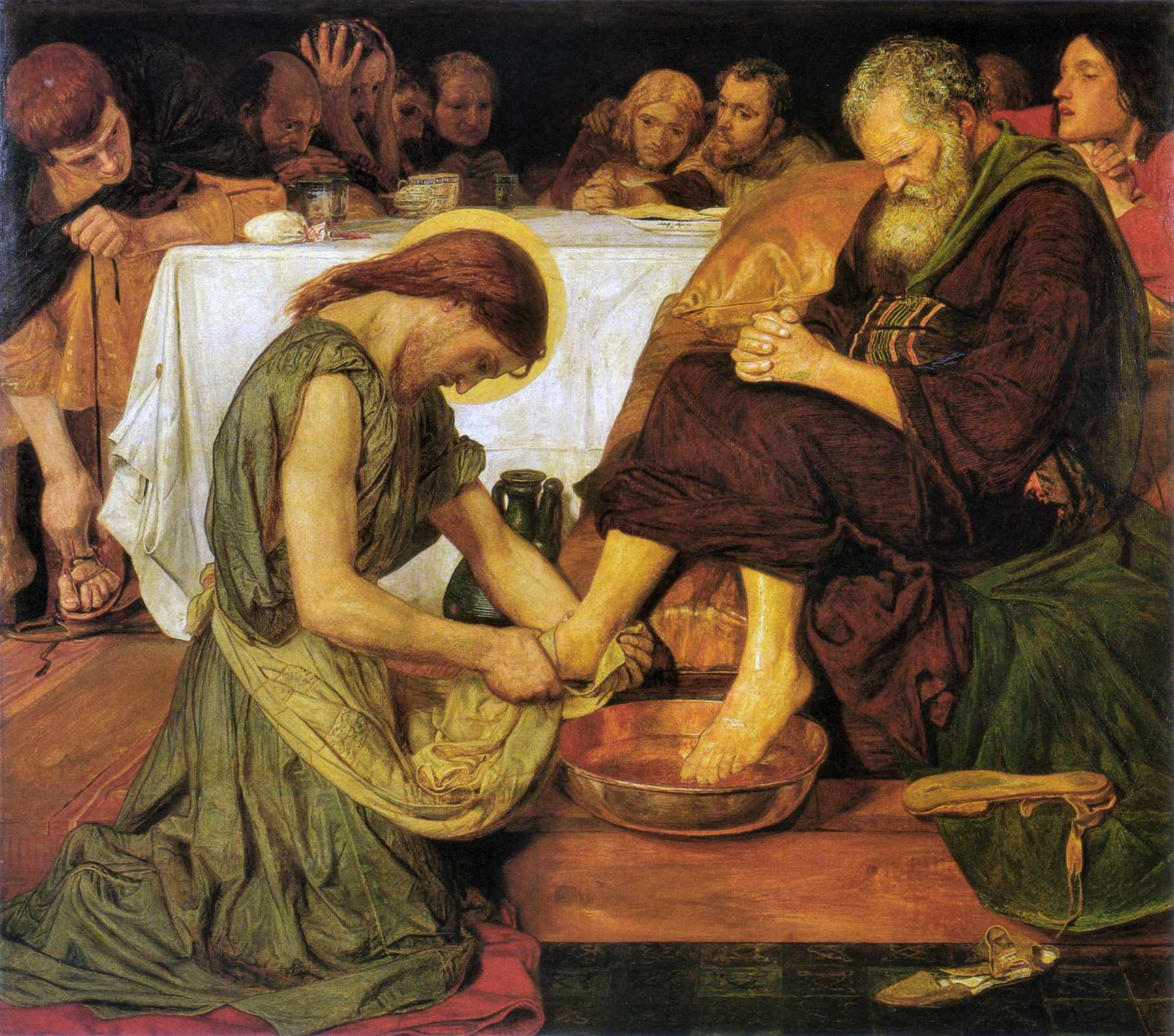|
The Holy Order Of MANS
History In 1961 the Holy Order of MANS was organized initially as the non-sectarian Science of Man Church in San Francisco by Earl Wilbur Blighton. Classes and meetings on the Ancient Mystery Teachings were held by Blighton on a regular monthly basis and a church structure began to grow. The founder, Earl Wilbur Blighton, a retired electrical engineer and minister, who used the honorific ''Rt. Rev.'' was also known as Master Paul or Father Paul. A number of his previous religious associations included the Roman Catholic Church, Spiritualism, New Thought and the Rosicrucian Order.Lucas, Philip Charles. Profile: Holy Order of MANS. Profiles of Religious and Spiritual Groups, ''World Religions & Spirituality Project VCU'', David G. Bromley, Project Director.Latin, Don. "Suddenly Orthodox", '' This World'', May 31, 1992. The stated mission and purpose of the Holy Order of MANS was to guide all mankind and the churches of Christ to union with the Divine Self of God within, the Div ... [...More Info...] [...Related Items...] OR: [Wikipedia] [Google] [Baidu] |
Praxis (process)
Praxis (from grc, πρᾶξις, translit=praxis) is the process by which a theory, lesson, or skill is enacted, embodied, or realized. "Praxis" may also refer to the act of engaging, applying, exercising, realizing, or practising ideas. This has been a recurrent topic in the field of philosophy, discussed in the writings of Plato, Aristotle, St. Augustine, Francis Bacon, Immanuel Kant, Søren Kierkegaard, Ludwig von Mises, Karl Marx, Antonio Gramsci, Martin Heidegger, Hannah Arendt, Jean-Paul Sartre, Paulo Freire, Murray Rothbard, and many others. It has meaning in the political, educational, spiritual and medical realms. Origins In Ancient Greek the word praxis (πρᾶξις) referred to activity engaged in by free people. The philosopher Aristotle held that there were three basic activities of humans: ''theoria'' (thinking), ''poiesis'' (making), and ''praxis'' (doing). Corresponding to these activities were three types of knowledge: theoretical, the end goal being truth; ... [...More Info...] [...Related Items...] OR: [Wikipedia] [Google] [Baidu] |
Spiritual Practice
A spiritual practice or spiritual discipline (often including spiritual exercises) is the regular or full-time performance of actions and activities undertaken for the purpose of inducing spiritual experiences and cultivating spiritual development. A common metaphor used in the spiritual traditions of the world's great religions is that of walking a path. Therefore, a spiritual practice moves a person along a path towards a goal. The goal is variously referred to as salvation, liberation or union (with God). A person who walks such a path is sometimes referred to as a wayfarer or a pilgrim. Religion Abrahamic religions Judaism Jewish spiritual practices may include prayer (including the Shema and Amidah), reciting blessings, Jewish meditation, Torah study, following dietary laws of kashrut, observing Shabbat, fasting, practices of teshuvah, giving tzedakah, and performing deeds of loving-kindness. ''Kavanah'' is the directing of the heart to achieve higher contemplative t ... [...More Info...] [...Related Items...] OR: [Wikipedia] [Google] [Baidu] |
Apostolic Succession
Apostolic succession is the method whereby the ministry of the Christian Church is held to be derived from the apostles by a continuous succession, which has usually been associated with a claim that the succession is through a series of bishops. Those of the Anglican, Church of the East, Eastern Orthodox, Hussite, Moravian, Old Catholic, Oriental Orthodox, Roman Catholic and Scandinavian Lutheran traditions maintain that "a bishop cannot have regular or valid orders unless he has been consecrated in this apostolic succession". These traditions do not always consider the episcopal consecrations of all of the other traditions as valid. This series was seen originally as that of the bishops of a particular see founded by one or more of the apostles. According to historian Justo L. González, apostolic succession is generally understood today as meaning a series of bishops, regardless of see, each consecrated by other bishops, themselves consecrated similarly in a succession ... [...More Info...] [...Related Items...] OR: [Wikipedia] [Google] [Baidu] |
Historic Episcopate
The historic or historical episcopate comprises all episcopates, that is, it is the collective body of all the bishops of a church who are in valid apostolic succession. This succession is transmitted from each bishop to their successors by the rite of Holy Orders. It is sometimes subject of episcopal genealogy. Line of succession In the churches that have well-documented ties to the history of Christianity as a whole, it is held that only a person in apostolic succession, a line of succession of bishops dating back to the Apostles, can be a valid bishop; can validly ordain priests, deacons and bishops; and can validly celebrate the sacraments of the church. These churches are the Roman Catholic Church, the Eastern Orthodox Church, the Eastern Rite Catholic Church, the Oriental Orthodox Church, the Church of Sweden, the Church of Denmark (Lutheran), the Evangelical Lutheran Church of Finland, the Old Catholic Church, the Moravian Church, the Independent Catholic Church ... [...More Info...] [...Related Items...] OR: [Wikipedia] [Google] [Baidu] |
Canon Law
Canon law (from grc, κανών, , a 'straight measuring rod, ruler') is a set of ordinances and regulations made by ecclesiastical authority (church leadership) for the government of a Christian organization or church and its members. It is the internal ecclesiastical law, or operational policy, governing the Catholic Church (both the Latin Church and the Eastern Catholic Churches), the Eastern Orthodox and Oriental Orthodox churches, and the individual national churches within the Anglican Communion. The way that such church law is legislated, interpreted and at times adjudicated varies widely among these four bodies of churches. In all three traditions, a canon was originally a rule adopted by a church council; these canons formed the foundation of canon law. Etymology Greek / grc, κανών, Arabic / , Hebrew / , 'straight'; a rule, code, standard, or measure; the root meaning in all these languages is 'reed'; see also the Romance-language ancestors of the Engli ... [...More Info...] [...Related Items...] OR: [Wikipedia] [Google] [Baidu] |
Apostolic Age
Christianity in the 1st century covers the formative history of Christianity from the start of the ministry of Jesus (–29 AD) to the death of the last of the Twelve Apostles () and is thus also known as the Apostolic Age. Early Christianity developed out of the eschatological ministry of Jesus. Subsequent to Jesus' death, his earliest followers formed an apocalyptic messianic Jewish sect during the late Second Temple period of the 1st century. Initially believing that Jesus' resurrection was the start of the end time, their beliefs soon changed in the expected Second Coming of Jesus and the start of God's Kingdom at a later point in time. Paul the Apostle, a Pharisee Jew who had persecuted the early Jewish Christians, converted –36 and started to proselytize among the Gentiles. According to Paul, Gentile converts could be allowed exemption from Jewish commandments, arguing that all are justified by their faith in Jesus. This was part of a gradual split of early C ... [...More Info...] [...Related Items...] OR: [Wikipedia] [Google] [Baidu] |
Tradition
A tradition is a belief or behavior (folk custom) passed down within a group or society with symbolic meaning or special significance with origins in the past. A component of cultural expressions and folklore, common examples include holidays or impractical but socially meaningful clothes (like lawyers' wigs or military officers' spurs), but the idea has also been applied to social norms such as greetings. Traditions can persist and evolve for thousands of years—the word ''tradition'' itself derives from the Latin ''tradere'' literally meaning to transmit, to hand over, to give for safekeeping. While it is commonly assumed that traditions have an ancient history, many traditions have been invented on purpose, whether that be political or cultural, over short periods of time. Various academic disciplines also use the word in a variety of ways. The phrase "according to tradition", or "by tradition", usually means that whatever information follows is known only by oral tradition, ... [...More Info...] [...Related Items...] OR: [Wikipedia] [Google] [Baidu] |
Pauline Christianity
Pauline Christianity or Pauline theology (also Paulism or Paulanity), otherwise referred to as Gentile Christianity, is the theology and form of Christianity which developed from the beliefs and doctrines espoused by the Hellenistic-Jewish Apostle Paul through his writings and those New Testament writings traditionally attributed to him. Paul's beliefs were rooted in the earliest Jewish Christianity, but deviated from this Jewish Christianity in their emphasis on inclusion of the Gentiles into God's New Covenant, and his rejection of circumcision as an unnecessary token of upholding the Mosaic Law. Proto-orthodox Christianity, which is rooted in the first centuries of the history of Christianity, relies heavily on Pauline theology and beliefs, and considers them to be amplifications and explanations of the Ministry of Jesus, teachings of Jesus. Since the 18th century, a number of scholars have proposed that Paul's writings contain teachings that are different from the origin ... [...More Info...] [...Related Items...] OR: [Wikipedia] [Google] [Baidu] |
New Age
New Age is a range of spiritual or religious practices and beliefs which rapidly grew in Western society during the early 1970s. Its highly eclectic and unsystematic structure makes a precise definition difficult. Although many scholars consider it a religious movement, its adherents typically see it as spiritual or as unifying Mind-Body-Spirit, and rarely use the term ''New Age'' themselves. Scholars often call it the New Age movement, although others contest this term and suggest it is better seen as a ''milieu'' or ''zeitgeist''. As a form of Western esotericism, the New Age drew heavily upon esoteric traditions such as the occultism of the eighteenth and nineteenth centuries, including the work of Emanuel Swedenborg and Franz Mesmer, as well as Spiritualism, New Thought, and Theosophy. More immediately, it arose from mid-twentieth century influences such as the UFO religions of the 1950s, the counterculture of the 1960s, and the Human Potential Movement. Its exact origins ... [...More Info...] [...Related Items...] OR: [Wikipedia] [Google] [Baidu] |
Master Jesus
Master Jesus is the theosophical concept of Jesus in Theosophy and the Ascended Master Teachings. Position in the Hierarchy of Masters of the Ancient Wisdom The Master Jesus is one of the Masters of the Ancient Wisdom in Theosophy and is one of the Ascended Masters (also collectively called the Great White Brotherhood; with white being in reference to the light) in the Ascended Master Teachings, a group of religions based on Theosophy. The Master Jesus is regarded by Theosophists, was regarded by Alice Bailey and was later regarded by students of the "Ascended Master Teachings" as the Master of the Sixth Ray.Bailey, Alice A, '' A Treatise on Cosmic Fire'' (Section Three - Division A - Certain Basic Statements), 1932, Lucis Trust. 1925, p 1237 It is believed by Ascended Master Teachings organizations that the Master Jesus was "Chohan of the Sixth Ray" until December 31, 1959, when, according to Elizabeth Clare Prophet, Lady Master Nada fully took on that Office in the Spiritu ... [...More Info...] [...Related Items...] OR: [Wikipedia] [Google] [Baidu] |
Religious Science
The Religious Science movement, or Science of Mind, was established in 1927 by Ernest Holmes (1887–1960) and is a spiritual, philosophical and metaphysical religious movement within the New Thought movement. In general, the term "Science of Mind" applies to the teachings, while the term "Religious Science" applies to the organizations. However, adherents often use the terms interchangeably. In his book, '' The Science of Mind'', Ernest Holmes stated "Religious Science is a correlation of laws of science, opinions of philosophy, and revelations of religion applied to human needs and the aspirations of man." He also stated that Religious Science/Science of Mind (RS/SOM) is not based on any "authority" of established beliefs, but rather on "what it can accomplish" for the people who practice it.Vahle (1993), p. 7 Today the International Centers for Spiritual Living, the United Centers for Spiritual Living (which combined into the Centers for Spiritual Living in 2011) ... [...More Info...] [...Related Items...] OR: [Wikipedia] [Google] [Baidu] |







